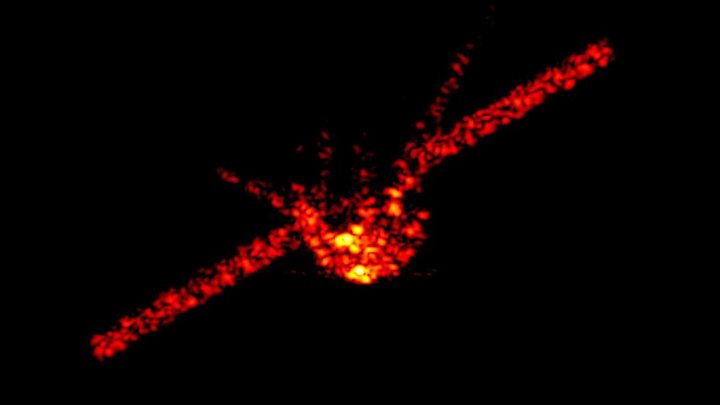Tiangong-1: Defunct China space lab comes down over South Pacific

China's defunct Tiangong-1 space lab mostly broke up on re-entering the Earth's atmosphere above the South Pacific, Chinese and US reports say.
It re-entered the atmosphere at 08:16 GMT on Monday, astronomer Jonathan McDowell tweeted.
Tiangong-1 was launched in 2011 to carry out docking and orbit experiments.
It was part of the country's efforts to build a manned space station by 2022 but stopped working in March 2016.
The 10m-long Tiangong module should really have been de-orbited in a planned manner.
Traditionally, thrusters are fired on large vehicles to drive them towards a remote zone over the Southern Ocean but this option appeared not to be available, especially after the loss of command links in 2016.
- Big harpoon is 'solution to space junk'
- Space junk threatens Earth's future
- The place spacecraft go to die
Thirteen space agencies, under the leadership of the European Space Agency, used radar and optical observations to follow Tiangong's path around the globe.
Tiangong means 'Heavenly Palace'
- The module was launched in 2011 to practise rendezvous and docking
- Two astronaut crews visited in Shenzhou capsules - in 2012 and 2013
- They included China's first female astronauts Liu Yang and Wang Yaping
- China plans a more permanent space station in the next decade
- It has developed a heavy-lift rocket, Long March 5, for the purpose
Tiangong was certainly on the large size for uncontrolled re-entry objects but it was far from being the biggest, historically:
- The US space agency's Skylab was almost 80 tonnes in mass when it came back partially uncontrolled in 1979. Parts struck Western Australia but no-one on the ground was injured
- Nasa's Columbia shuttle would also have to be classed as an uncontrolled re-entry. Its mass was more than 100 tonnes when it made its tragic return from orbit in 2003. Again, no-one on the ground was hit as debris scattered through the US states of Texas and Louisiana
Jonathan McDowell from the Harvard-Smithsonian Center for Astrophysics believes Tiangong is only the 50th most massive object to come back uncontrolled.
China has launched a second lab, Tiangong-2, which continues to be operational. It was visited by a re-fuelling freighter, Tianzhou-1, just last year.
China's future permanent space station is expected to comprise a large core module and two smaller ancillary modules, and will be in service early in the next decade, the Asian nation says.
A new rocket, the Long March 5, was recently introduced to perform the heavy lifting that will be required to get the core module in orbit.